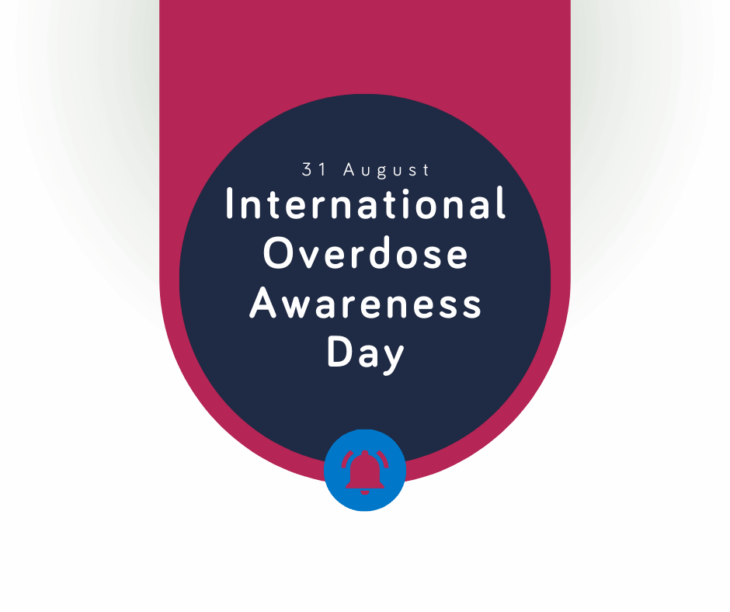International Overdose Awareness Day: Reducing Harm and Offering Support

What the campaign is for
IOAD invites everyone, from individuals and families affected by overdose to healthcare professionals, advocates, and policymakers, to honour, remember, and act. The key principles laid out remind us that:
- Overdose can and must be prevented.
- Effective prevention solutions already exist.
- Criminalisation of drug use has failed – compassion and health-based responses are needed.
- Human rights, dignity, and healthcare access must be at the centre of policies.
- Communities working together are key to ending overdoses.
Ways to reduce the risk of substance use
While no drug use is without risk, there are practical steps that can help keep you safer:
- Be cautious about your supply – know who and where your drugs are sourced from.
- Start low, go slow – use a small dose and wait at least two hours before considering more.
- Use in a safe environment – stay somewhere familiar with people you trust.
- Don’t use alone – make sure someone is with you who can call for help if needed.
- Avoid mixing substances:
- Stimulants increase the risk of heart problems, anxiety, or psychosis.
- Depressants raise the risk of overdose, slowing breathing and heart function.
- Mixing stimulants and depressants places a severe strain on the heart.
- Alcohol with drugs can be particularly dangerous, increasing the risk of overdose, heart attack, seizures, and sudden death.
- Carry naloxone – a proven, life-saving antidote for opioid overdoses.
What is naloxone?
Naloxone is an emergency antidote to an opioid overdose. It works by blocking opioid receptors in the brain, quickly reversing the effects of opioids such as heroin, morphine, and methadone. This temporary action restores normal breathing and can save a life in the critical moments before medical help arrives.
Naloxone kits are available in two easy-to-use types:
- Prenoxad – a pre-filled syringe for injection. Hold the syringe like a pen and inject one dose (0.4mg) into the outer thigh or upper arm.
- Nyxoid – a nasal spray. Gently insert the nozzle into one nostril and press firmly until the plunger clicks to deliver the full dose.
Naloxone is safe to use—even if someone is not experiencing an opioid overdose, it will not harm them. Ideally, you should always carry more than one kit, as multiple doses may be needed.
What to do if someone has taken an overdose
If you believe someone has overdosed:
- Make sure the area is safe for you and them.
- Check for responsiveness – pinch their ear or gently shake their shoulders.
- Call 999 immediately and ask for an ambulance.
- Administer naloxone if available.
- Place them in the recovery position to keep their airway clear.
- Stay with them and monitor breathing until help arrives. A second dose of naloxone can be given if needed.
- Dispose safely of any sharps or used kits afterwards.
Are you worried about your substance use?
It can be frightening to think about reducing or stopping your substance use, but recognising harmful patterns is the first step. Signs that your use may be becoming harmful include:
- Planning your day around substances.
- Needing higher doses or stronger substances to feel the same effects.
- Strained relationships or problems at work, school, or home.
- Declining physical or mental health.
- Losing interest in hobbies and activities.
- Only feeling satisfied when using.
- Friends or family noticing changes in your behaviour.
If this sounds familiar, you don’t have to face it alone—we are here to support you.
We provide a range of services across England to support individuals and families affected by drug and alcohol use. Find your local support services today.
United in remembrance and hope
On this International Overdose Awareness Day, we remember those lost, support those affected, and take action to prevent future tragedies. Overdose is preventable, and with compassion, knowledge, and community, we can save lives.